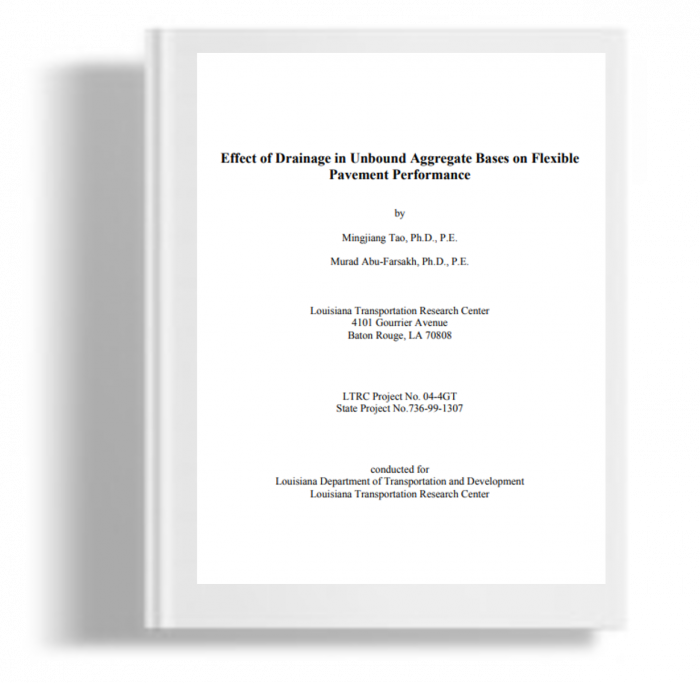Kami menggunakan cookies untuk membuat pengalaman Anda lebih baik. Untuk mematuhi petunjuk e-Pribadi yang baru, kami perlu meminta persetujuan Anda untuk menyetel cookies. Pelajari lebih lanjut .
Effect of drainage in unbound Aggregate bases on flexible pavement performance
This study is to determine a proper/optimum gradation by conducting laboratory testing for unbound aggregates of Mexican limestone that are commonly used in Louisiana highways. However, there is trade-off between structural stability and permeability of unbound aggregates. The increase of permeability is often at the cost of structural stability or vice verse. Therefore, the criteria for selecting an optimum gradation are: (1) an adequate permeability to drain the infiltrated-water from the pavement as quickly as possible; and (2) a sufficient structural stability to support the traffic loading. The permeability of unbound aggregate is quantified by its saturated hydraulic conductivity while its structural stability is characterized by various laboratory tests on the strength, stiffness, and permanent deformation of the material. A series of laboratory tests, including constant-head permeability, California Bearing Ratio (CBR), Dynamic Cone Penetrometer (DCP), tube suction (TS), monotonic load traiaxial tests, and repeated load triaxial (RLT) tests, were conducted on Mexican limestone with different gradations. The gradations under investigation include coarse and fine branches of Louisiana class II gradation, New Jersey gradation medium, and an optimum gradation (fine and coarse branches). The optimum gradation is the result of a series of laboratory trial-error tests.
This study is to determine a proper/optimum gradation by conducting laboratory testing for unbound aggregates of Mexican limestone that are commonly used in Louisiana highways. However, there is trade-off between structural stability and permeability of unbound aggregates. The increase of permeability is often at the cost of structural stability or vice verse. Therefore, the criteria for selecting an optimum gradation are: (1) an adequate permeability to drain the infiltrated-water from the pavement as quickly as possible; and (2) a sufficient structural stability to support the traffic loading. The permeability of unbound aggregate is quantified by its saturated hydraulic conductivity while its structural stability is characterized by various laboratory tests on the strength, stiffness, and permanent deformation of the material. A series of laboratory tests, including constant-head permeability, California Bearing Ratio (CBR), Dynamic Cone Penetrometer (DCP), tube suction (TS), monotonic load traiaxial tests, and repeated load triaxial (RLT) tests, were conducted on Mexican limestone with different gradations. The gradations under investigation include coarse and fine branches of Louisiana class II gradation, New Jersey gradation medium, and an optimum gradation (fine and coarse branches). The optimum gradation is the result of a series of laboratory trial-error tests.

